Lubbock, TX Pollen and Allergy Report for Summer 2023
Pollen Allergy Trends in Lubbock, TX
When is pollen lowest in Lubbock, TX?

February
Lowest month total PPM
Avg. PPM
When is pollen highest in Lubbock, TX?

March
Highest month total PPM
Avg. PPM
How does pollen in Lubbock, TX compare to Texas?
Lubbock has a lower average PPM than the state of Texas.
Lubbock yearly avg PPM:
Texas yearly avg PPM:
How does pollen in Lubbock, TX compare to the USA?
Lubbock has a lower average PPM than the USA.
Lubbock yearly avg PPM:
USA yearly avg PPM:
Is pollen worse this year in Lubbock, TX?
Spring 2023 was worse than spring 2022.
Spring 2023 PPM:
Spring 2022 PPM:
Average PPM in Lubbock, TX
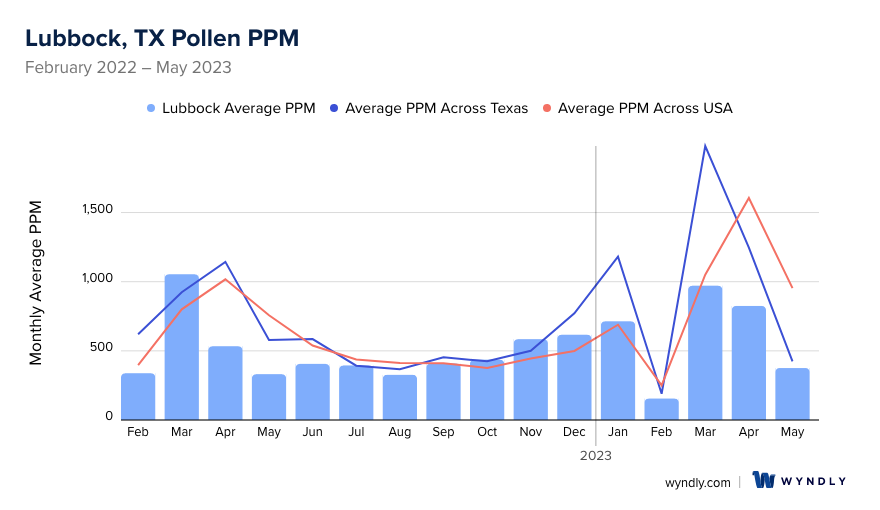

Lubbock, TX Pollen and Allergy Breakdown by Month
Grass
When is grass pollen highest in Lubbock, TX?
May has the highest grass pollen in Lubbock, TX with an average PPM of
When is grass pollen lowest in Lubbock, TX?
April has the lowest grass pollen in Lubbock, TX with an average PPM of
Tree
When is tree pollen highest in Lubbock, TX?
March has the highest tree pollen in Lubbock, TX with an average PPM of
When is tree pollen lowest in Lubbock, TX?
May has the lowest tree pollen in Lubbock, TX with an average PPM of
Weed
When is weed pollen highest in Lubbock, TX?
December has the highest weed pollen in Lubbock, TX with an average PPM of
When is weed pollen lowest in Lubbock, TX?
February has the lowest weed pollen in Lubbock, TX with an average PPM of
Lubbock, TX Pollen Monthly Breakdown by Pollen Type
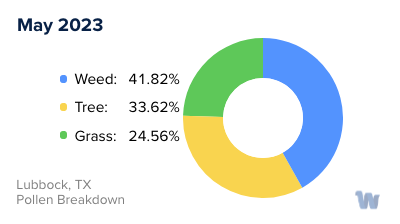
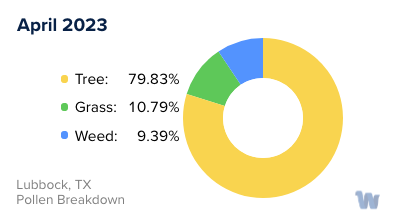






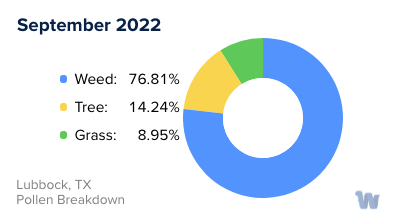
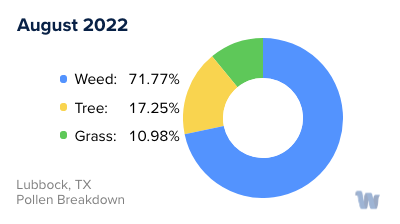

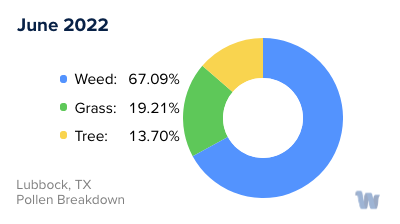
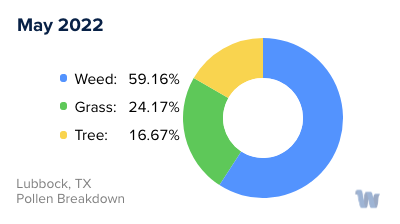
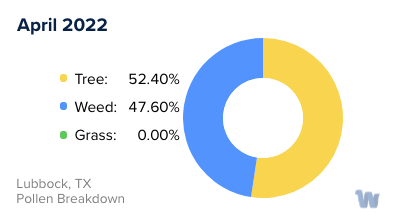

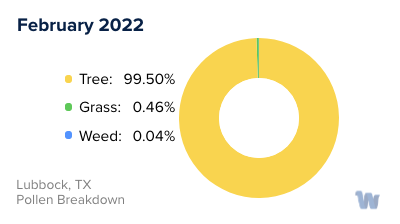
Pollen and Hay Fever in Lubbock, TX
In Lubbock, Texas, residents are no strangers to pollen allergies, also known as hay fever. A variety of pollen sources can contribute to allergy symptoms in the area, primarily stemming from local trees, weeds, and grasses.
Tree pollen, in particular, can be a significant culprit for those with hay fever. Specific tree species and the severity of their pollen production can fluctuate daily, dependent on weather conditions and the time of year. However, trees are not the sole culprits. Weeds and grasses also play a substantial role in pollen production, contributing to the overall pollen count that affects allergy sufferers in Lubbock.
The transition of seasons also brings a shift in the types of pollen predominantly present in the air. As summer gives way to fall, the primary allergy triggers transition from grasses to weeds. In particular, weeds like pigweed and ragweed become the major contributors to fall allergies in Lubbock, growing in abundance even in areas such as bar ditches.
Understanding the types of pollen present in the environment and their seasonal variations can help Lubbock residents better anticipate and manage their allergy symptoms. While the severity and timing of these pollen seasons can vary year by year due to weather and other environmental factors, the recurring patterns provide valuable insights into what triggers might be causing discomfort and when those triggers are most likely to be present.
Remember, pollen levels and types can vary significantly from day to day and season to season. Staying informed about these changes can help those with pollen allergies in Lubbock better understand their symptoms and take proactive steps to manage their wellbeing.

